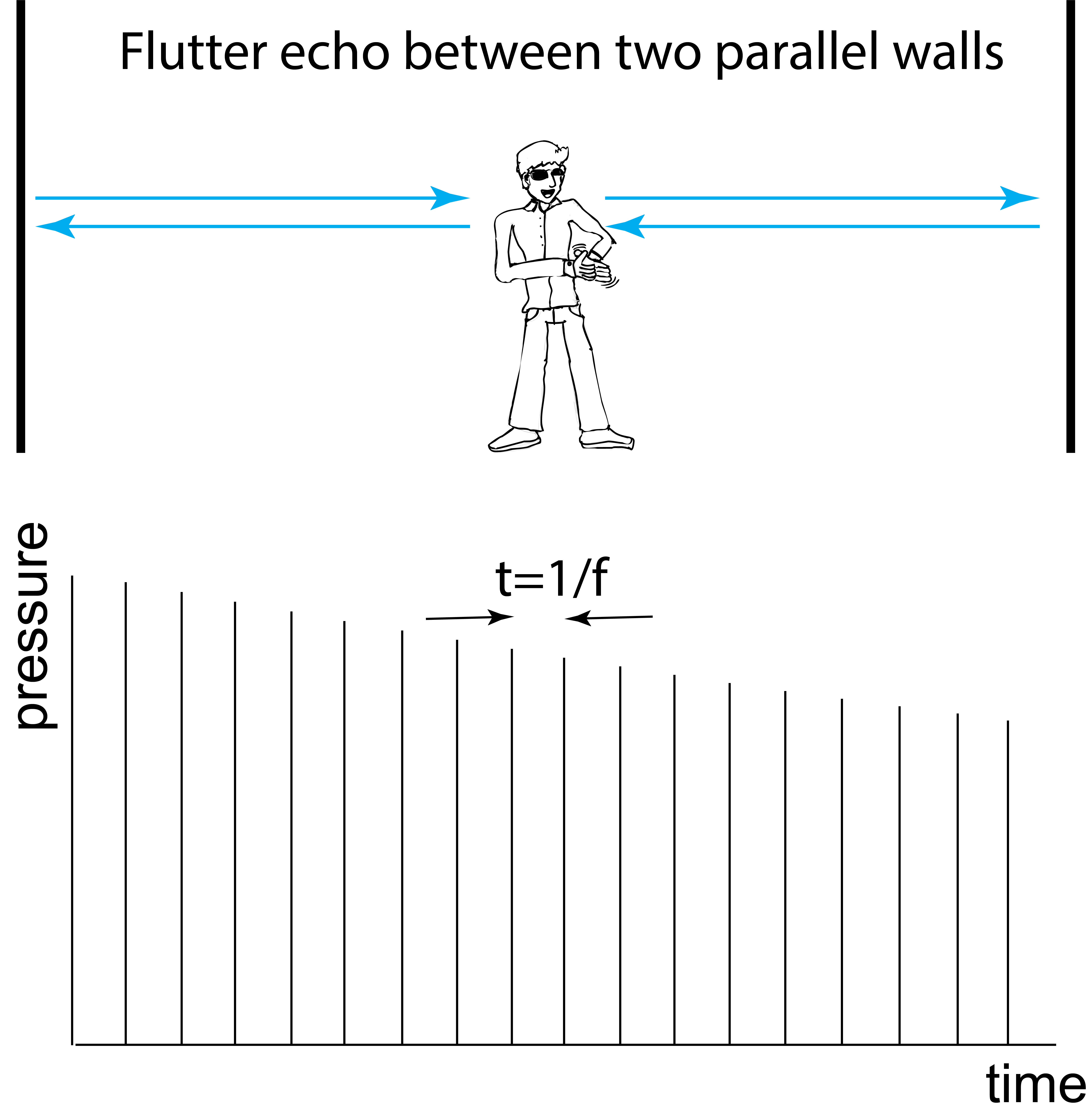The abandoned Thurgoland railway tunnel near Sheffield creates an extraordinary metallic flutter when you shout or clap your hands. I was alerted to this strange acoustic when I was interviewed for the Channel 5 programme Walking Britain’s Lost Railways. If you want to experience it yourself, it’s open to all as part of the National Cycle Network. While many tunnels have lots of reverb, it is unusual to have such a warbling effect.
On the Channel 5 programme I suggested it was due to the horseshoe shape, but that was based on a hunch rather than a detailed analysis. Since then I’ve been trying to gather evidence for what is really going on, working with Dom Parry-Merrell a final year project student studying Acoustical and Audio Engineering at Salford University.
Flutter echoes
The warble in Thurgoland is a type of flutter echo. These are caused by repetitive reflection paths. Clap your hand in a stairwell and you’ll often hear a ping created by a flutter echo. This is created as sound bounces back and forth between parallel, smooth, large reflective walls. The regular pattern of the reflections arriving at your ear creates what is called repetition pitch. The frequency heard is given by the reciprocal of the spacing between the reflections (or more often a multiple of this). To hear a distinct note, the delay between the reflections must be short, less than about twenty-five milliseconds.

More unusual are flutter echoes that create strong temporal effects, because that requires large spaces with long delays between the reflections. But it does happen, as this video in a gymnasium demonstrates.
For a temporal warble, repeating reflections need to be spaced at more than twenty-five milliseconds. Sound travels 8.5 metres in that time, so how does the Thurgoland tunnel create a warble when it is only about 4 metres across. It’s just too narrow. This is where the horseshoe shape become important.

The animation shows sound being modelled as a simple bouncing ball. At each wall the ball follows the law of reflection (angle of incidence = angle of reflection). The source is the black circle and the red circle is where the listener is. You can see that the sound keeps returning to the receiver, but it takes a few reflections before it returns. There is a pattern of regular reflection arrivals, but the bowed shape of the tunnel creates paths that traverse the width more than once before returning to the receiver. This is why Thurgoland has a flutter echo with reflections arriving roughly every 60 ms.
An important feature is there is a broad range of angles over which such paths exist. This means the flutter is audible above other reflections that are following more random paths (such as bouncing from the ceiling). Another important feature is that the repetitive paths go on a long time so can be clearly heard. This happens because the walls are smooth and made of thick concrete, meaning the sound dies away very slowly in the space.
If you want to read about other strange echoes, try my book Sonic Wonderland/The Sound Book.
Have you heard a place like this before? Or can suggest other places with interesting acoustics? Please comment below.
Follow me
3 responses to “Fluttering Reverb in a Railway Tunnel”
[…] Trevor Cox on the unique “fluttering reverb” of a railway tunnel. […]
Great sound – I’d like to hear an impulse! Here’s one, a bit more subtle, that I’ve been enjoying for years. Best in headphones and the most interesting bit is about 1m in. Plus bonus bells!
https://freesound.org/people/JackRabelais/sounds/387475/
[…] railway tunnel 🎅Youtube Dave Sowden shouted #Ho to test the acoustics, I turned it into #HoHoHo. Warble comes from repetitive sound paths. #AcousticAdvent […]